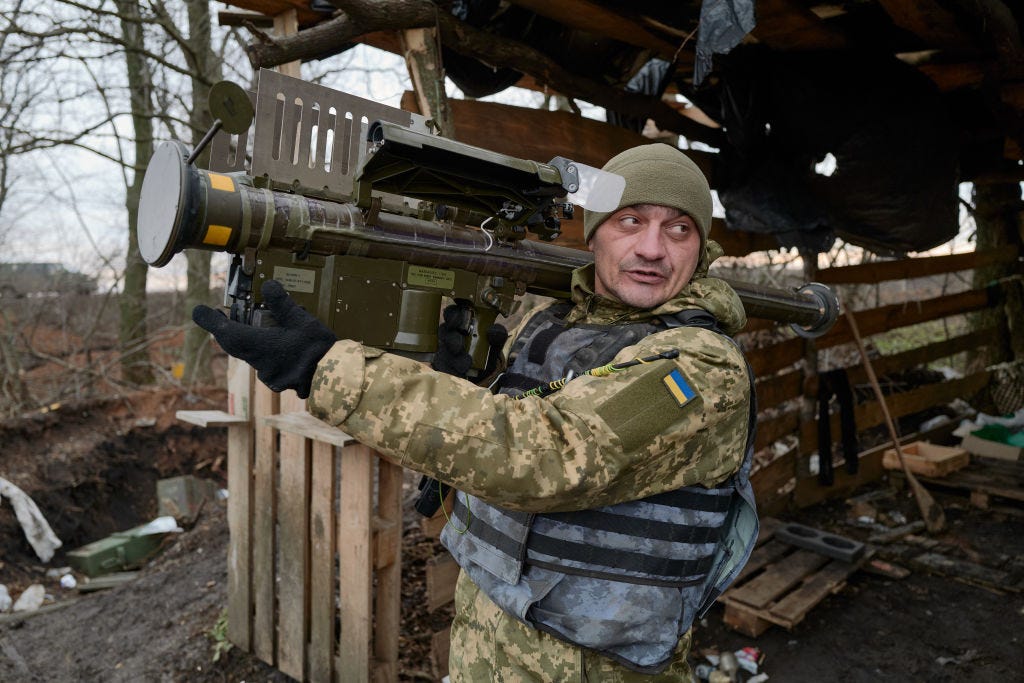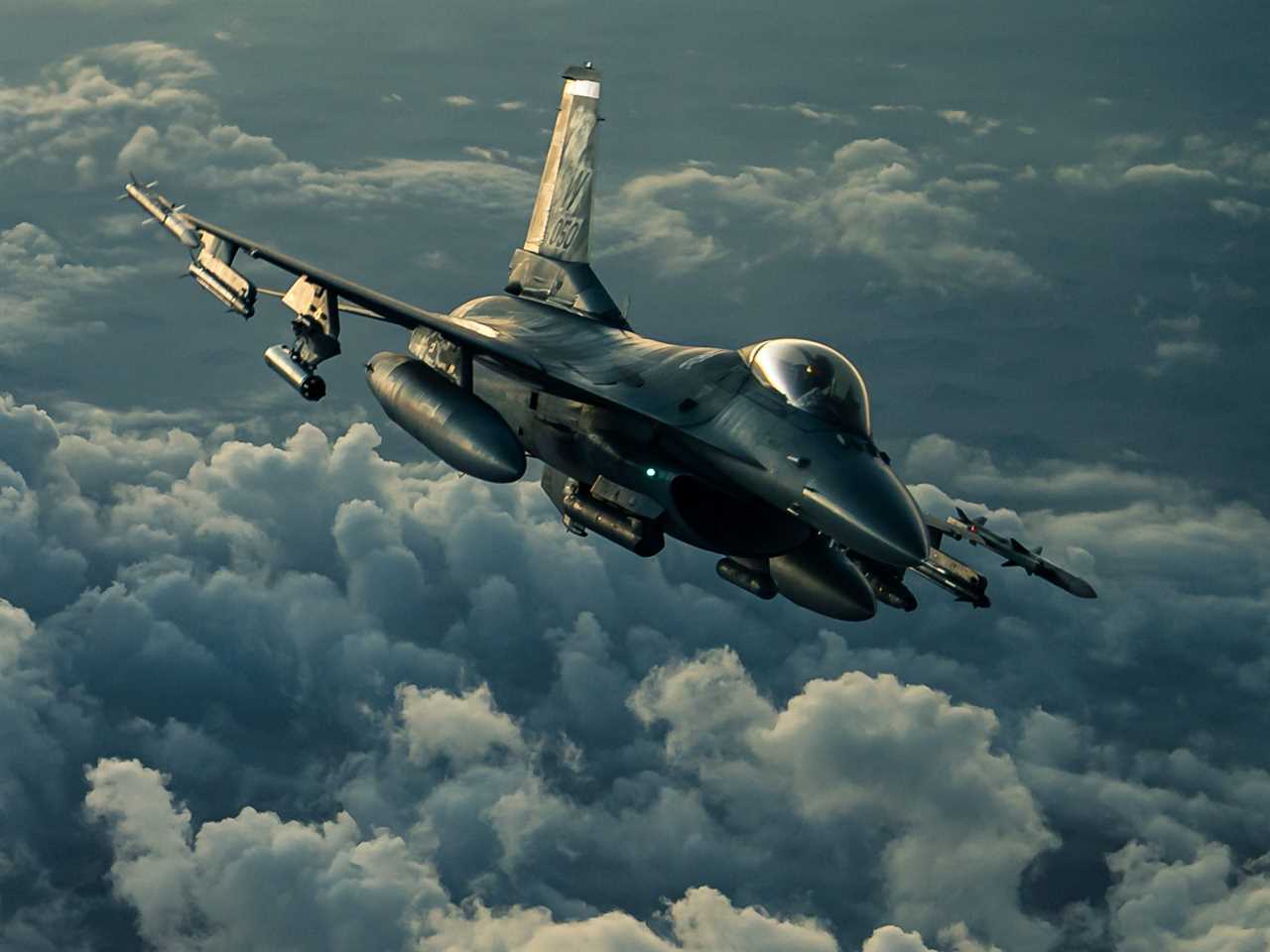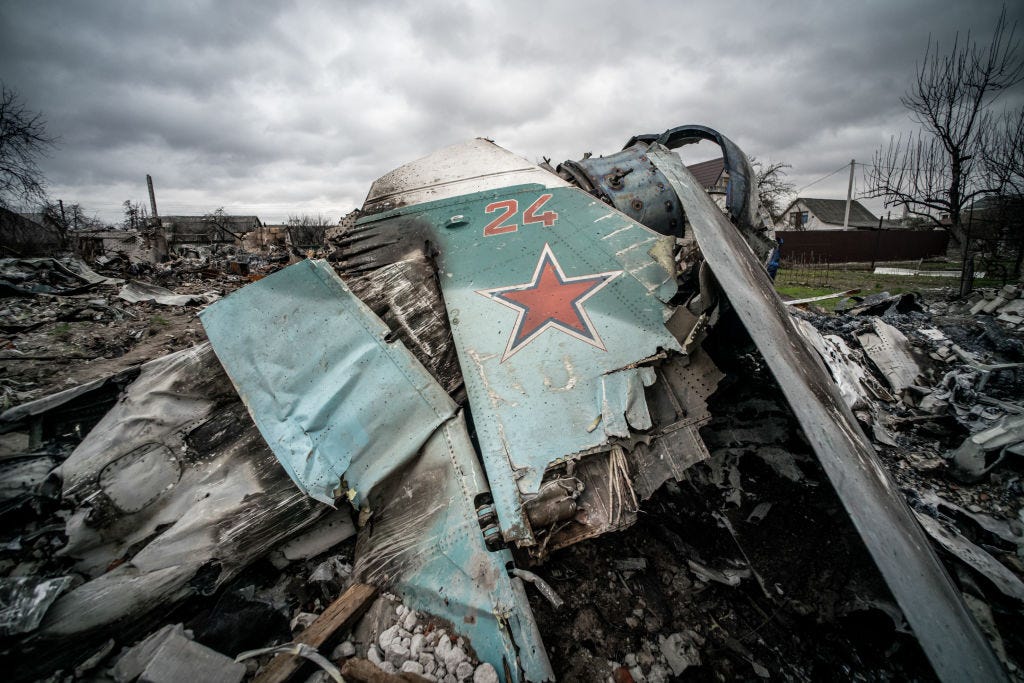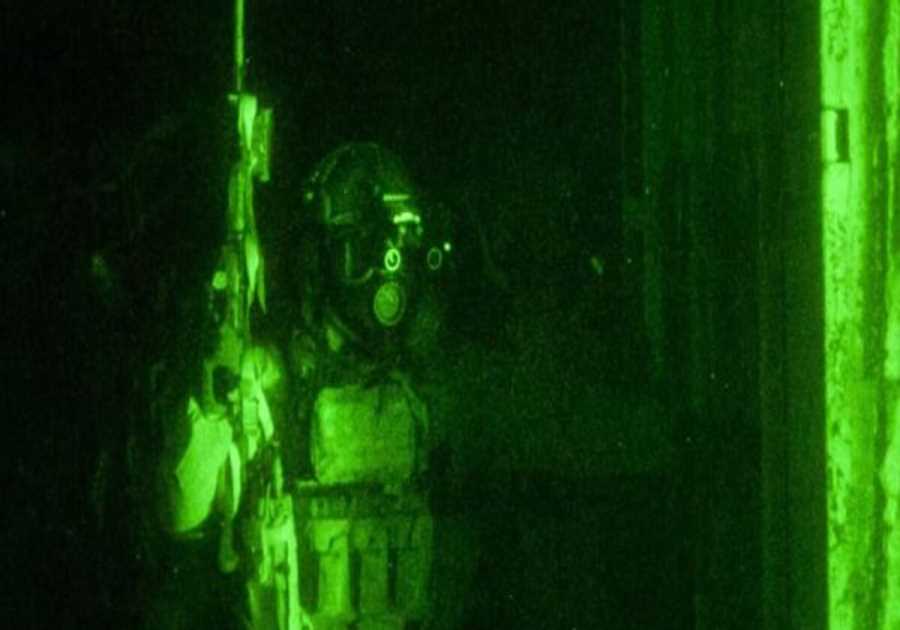US Air Force photo
- The Ukrainian military is raising concerns about Russia's latest tactics, specifically guided glide bombs.
- Its defenses struggle to counter the bombs, so Ukraine wants tools to take out the Russian strike fighters.
- Experts said that if Ukraine can't kill them on the ground, then it needs jets and surface-to-air missiles.
Ukraine can't counter the crude, guided glide bombs Russian strike fighters have been dropping and needs fighter jets and long-range air defense to go after the Russian planes, a military spokesman said. Airpower experts agreed, telling Insider that Ukraine needs the tools to take its enemy out in the air.
Well over a year into Russia's war in Ukraine, the front lines are murderous and largely static, but that could change should one side get the edge in the air, experts said, arguing that more surface-to-air missiles and airpower would give Ukraine a tougher defense and stronger offense that might stanch the blood loss in this war of attrition.
David Deptula, a retired US Air Force lieutenant general who planned the Desert Storm air campaign and directed air operations in later conflicts, told Insider that additional "airpower is the one asymmetric advantage that can break this stalemate, and it's the only way to fundamentally give the Ukrainians a decisive advantage over the Russians." For him, that means F-16s, and that's what Ukraine wants.
Ukrainian Air Force Col. Yurii Ihnat said in a press briefing last Tuesday that Kyiv's forces are facing a difficult challenge — guided glide bombs that Russian fighters can drop at range to skirt enemy defenses. Ihnat said that "the use of the guided aviation bombs along the state border and along the forward edge of the battle area is going on on a daily basis," adding that about 20 to 200 of these bombs hit every day. And though they're "poor quality," they pack a punch.
"We cannot counter this type of ammunition," Ihnat said of the guided glide bombs with a range of about 70 kilometers, or just a bit over 43 miles. "It's irrational, and our air defense is inefficient against the bombs themselves. But, we should rather try to down the Su-34 carriers of those aviation bombs, the tactical fixed-wing aircraft," which include Russian Su-35s.
Throughout the war, Ukraine's surface-to-air missiles have proven a hindrance to efforts by Russia's air force, which has an advantage in numbers and technical capability, to conduct significant and sustained operations. Likewise, Ukrainian pilots have faced troubles with Russian air defenses, and both sides have lost dozens of aircraft.
Adjusting its tactics to adapt, Russia has been modifying its stockpile of cheap unguided bombs, weapons it has previously been unable to use due to the threat posed by Ukrainian defenses.
"We started hearing noise about Russia upgrading some of them with glide packages, similar to the US JDAM, and we've seen them in use since about April," Ian Williams, a missile defense and international security expert at the DC-based Center for Strategic and International Studies, told Insider. JDAMs, or Joint Direct Attack Munitions, are guidance kits able to turn unguided "dumb" bombs into guided munitions with greater range using fins.
Williams said his guess is that "the Russian aircraft are flying low to avoid radar detection, climbing briefly to release the bombs, then getting out" of Dodge, as the saying goes, leaving a problem for the Ukrainian defenses. "Guided bombs are tricky for air defense because they have short flight times and usually very little infrared signature," he said.

Pierre Crom/Getty Images
'What is needed to fight them?'
Ihnat has previously characterized Russia's guided glide bombs as a threat requiring an urgent response and emphasized during last Tuesday's press briefing that Ukraine needs additional weaponry, particularly air defenses and fighter jets, from its Western supporters to combat this Russian tactic, stressing that his country's ground-based air defenses are insufficient.
"What is needed to fight them?" he asked before saying that "everybody knows the answer."
"We need a long hand to reach the enemy on the distance further than we can do it now," he said. "The air defense system with the longest distance available to us is the S-300, but it's Soviet-era weapons."
Ihnat said Ukraine now possesses some Western equipment that can target enemy aircraft out to 150 km, a reference to the Patriot batteries his country recently received from the US and its partners in Europe, but indicated air defense systems with suitable range are limited in number.
Pressing for the American-made F-16, which Kyiv has long sought but the US has so far refused to provide, Ihnat said the aircraft could "efficiently counter Russian aviation all along the forward edge of the battle area" and "reduce the desire of enemy aviation to approach our borders and to use those guided bombs." He noted it might not even be necessary to shoot down Russian planes to achieve a deterrence effect.
—Defense of Ukraine (@DefenceU) May 4, 2023
Some expert observers like John Venable, a former F-16 pilot and an expert at The Heritage Foundation, argue that deployed Russian air defenses are a fairly insurmountable obstacle for the fourth-generation aircraft he once flew. He said these planes are "completely outmatched in high-threat environments."
Others, however, see fighter jets like the American F-16, a multirole fighter that first flew in the 1970s, as critical combat assets that would give Ukraine the edge in the air domain and help it break the stalemate in the battle for control of the skies.

US Air Force photo
Looking for the right tools to 'kill the Su-34s'
Without specifically commenting on the American fourth-generation fighter jet, Williams said that "additional fighter aircraft equipped with long-range air-to-air missiles will help here," noting that "they can better see over the horizon and engage Russian aircraft before they can get within bombing range."
Justin Bronk, an airpower expert at the London-based Royal United Services Institute, made the point earlier this year that although there is a substantial threat from Russian SAMs and missiles able to target Ukrainian bases, "Western fighters will undoubtedly provide a major boost to Ukrainian Air Force survivability and air-to-air lethality."
Deptula, dean of the Mitchell Institute for Aerospace Studies, told Insider the "most effective" way to deal with Russian fighters dropping bombs is to "kill the Su-34s," and the best approach is to eliminate them "before they take off."
Arguing that Russia does not deserve sanctuary in this war, he said that long-range strike capabilities like the Army Tactical Missile System (ATACMS), a High Mobility Artillery Rocket System (HIMARS)-launched option that the US withheld over key concerns about the potential to strike Russian territory, would make a difference.
"From a military perspective, take all the politics out of it, the most effective way to deal with that threat is to take out those offensive aircraft on the ground," Deptula said. But, "if you have to deal with the pragmatic realities of the handcuffs that have been issued to them, then you have to take out those aircraft in the air."
"And the most effective way to do that is with other air-to-air combat aircraft with capable weapon systems with the appropriate reach and with the radars onboard that can employ those," he said, pointing out that this is a strong rationale for providing the F-16, which has been a key US air defense asset for decades as part of the post-9/11 Noble Eagle mission that defends US and Canadian airspace.
"No one is presuming that there's going to be zero losses. That is absolutely unrealistic," he said, challenging the arguments against sending fighter aircraft. "But the reality is Ukrainians are dying every day, and prolonging the war by allowing the duration to be extended is the more deadly of the options at hand."
"The sooner we get fighters into the hands of Ukraine's combat-experienced fighter pilots, the greater Ukraine's chances of success," Deptula said, noting though that it doesn't even have to be the F-16, though it is a particularly versatile and available platform. The F-16 can carry short-range air-to-air missiles like the AIM-7 or AIM-9 and long-range air-to-air missiles like the AIM-120, as well as air-to-surface missiles for a variety of targets, including enemy air defenses.
Last summer, Bronk argued that though the F-16 was politically and logistically expedient, the aircraft might not be as effective as the Swedish Gripen, which "would be better suited from an operational point of view due to design [concept of operations], internal [electronic warfare] suite optimized for Russian SAM defence at low level, ease of maintenance and Meteor option," a reference to the beyond-visual-range air-to-air missile with a maximum operational range of about 200 km.
"Whether it's F-16s, F/A-18s, Gripens, Rafales, they're all available in quantities in Europe today," Deptula said, but it only matters "if the United States has the courage to lead by supporting providing fighters to Ukraine."

Nicola Marfisi/AGF/Universal Images Group via Getty Images
Air defense 'has greatly shaped the course of the war'
Regardless of which aircraft would be the best option, delivering Western fighter jets and standing up that capability in the middle of a war is easier said than done. There are significant training, supply chain, and operational hurdles to overcome, making essential ground-based air defense a priority in the meantime.
A recent Center for Naval Analyses report on the strengths and weaknesses of the Russian air forces from Bronk made the case that the ongoing air battle in Ukraine turns on whether Ukrainian forces can maintain an adequate supply of surface-to-air missiles.
Bronk wrote that "if Ukraine's SAM systems cannot be kept resupplied, augmented, and ultimately replaced by Western partner nations," then it is possible Russia's air forces "could credibly threaten to overpower the [Ukrainian Air Force's] remaining fighters and gain control of the airspace over the frontlines in key areas," shattering the stalemate in Russia's favor.
Williams made a similar point in a new CSIS report, writing that the success of Ukrainian air defenses "has greatly shaped the course of the war, limiting Russian striking power to diminishing numbers of stand-off missiles or uncrewed aerial systems."
A diminished air defense capability, however, would not only leave "Ukraine at greater risk from Russian missile attack but raise the prospects of the Russian Air Force resuming penetrating sorties into Ukrainian airspace," he wrote, adding that "to the extent possible, replenishing Ukraine's air defense capacity should remain a priority for Western military aid for the foreseeable future."
Air defense is not just on the ground though, and sooner rather than later, Deptula said, Kyiv is going to need Western fighter aircraft that are able to deliver not just additional air defense options for Ukraine but also rapid counteroffensive effect.
"Ukraine has made the most of their Soviet-era combat aircraft, but combat losses and parts shortages, they're taking a toll," he said. "So Ukraine's got to transition to Western combat aircraft or face a future without any combat aircraft at all," a possibility which could threaten its survival in this war.
Read More
By: [email protected] (Ryan Pickrell)
Title: Ukraine wants F-16s to shoot down Russian strike fighters dropping bombs it can't beat. Airpower experts say give them the jets.
Sourced From: www.businessinsider.com/ukraine-shoot-down-russian-planes-f16-glide-bombs-military-2023-5
Published Date: Tue, 09 May 2023 10:00:00 +0000
.png)





